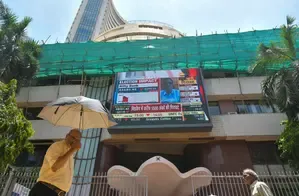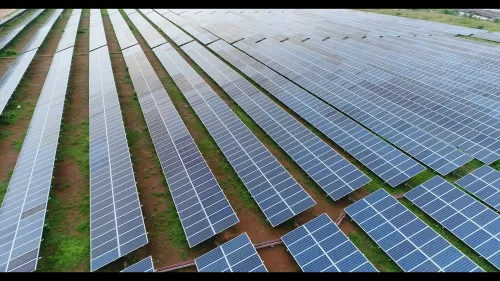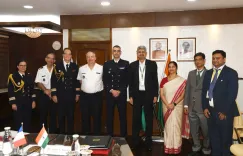How is India Promoting Sustainability and Growth in Fisheries on World Fisheries Day?

Synopsis
Key Takeaways
- India ranks as the second-largest fish producer globally.
- Fish production in India has more than doubled from 2013-14 to 2024-25.
- The fisheries sector supports over 30 million livelihoods.
- Government reforms aim to enhance the competitiveness of Indian seafood exports.
- India's coastline and inland water resources contribute significantly to fish production.
New Delhi, Nov 20 (NationPress) India ranks as the second-largest fish producer globally and is also a top contender in shrimp production, with fish output soaring from 96 lakh tonnes in 2013–14 to 195 lakh tonnes by 2024–25, according to data released by the government ahead of World Fisheries Day.
Marked internationally on November 21, this day emphasizes the vital importance of sustainable fisheries and aquaculture in achieving food security, supporting livelihoods, and maintaining ecological balance. This year's theme is “India’s Blue Transformation: Strengthening Value Addition in Seafood Exports.”
This day is especially significant for India, where the fisheries sector supports over 30 million livelihoods, particularly in coastal and rural areas, and acts as a major catalyst for the nation's blue economy.
Coastal states and Union Territories, home to approximately 3,477 coastal fishing villages, contribute 72% of India’s total fish production and account for 76% of seafood exports. Notably, marine product exports have surged by 11.08%, climbing from $0.81 billion in October 2024 to $0.90 billion in October 2025.
India is committed to bolstering the fisheries sector with recent reforms under GST 2.0. As part of this initiative, GST rates for fish oils, fish extracts, and prepared or preserved fish and shrimp products have been reduced from 12% to 5%.
This reduction aims to enhance the affordability of value-added seafood domestically, thereby boosting the global competitiveness of Indian seafood exports.
India accounts for nearly 8% of global fish production, with the fisheries sector serving as a crucial source of food, employment, and income for millions, especially in coastal and rural communities. The sector has seen significant growth in both scope and sustainability over the past decade.
From 2013–14 to 2024–25, India's total fish production has more than doubled from 96 lakh tonnes to 195 lakh tonnes, with inland fisheries experiencing a remarkable 140% growth. Seafood exports are projected to reach Rs 62,408 crore in 2024-25, showcasing the sector's increasing competitiveness on a global scale.
According to reports, India’s extensive 11,099 km coastline and expansive inland water resources have propelled this advancement, enhancing the nation’s role in the global blue economy while improving nutritional security.
This rapid growth is supported by a series of transformative government initiatives, including the 5th National Marine Fisheries Census 2025, the Sustainable Harnessing of Fisheries in the Exclusive Economic Zone regulations, and significant programs such as the Fisheries and Aquaculture Infrastructure Development Fund (FIDF), Pradhan Mantri Matsya Sampada Yojana (PMMSY), and Pradhan Mantri Matsya Kisan Samridhi Sah-Yojana (PM-MKSSY).
With a total investment of Rs 20,312 crore allocated for the period 2020–21 to 2025–26, the PMMSY initiative aims to foster a Blue Revolution by promoting sustainable and responsible development in India’s fisheries sector while enhancing the welfare of fishers and fish farmers across all States and Union Territories.









